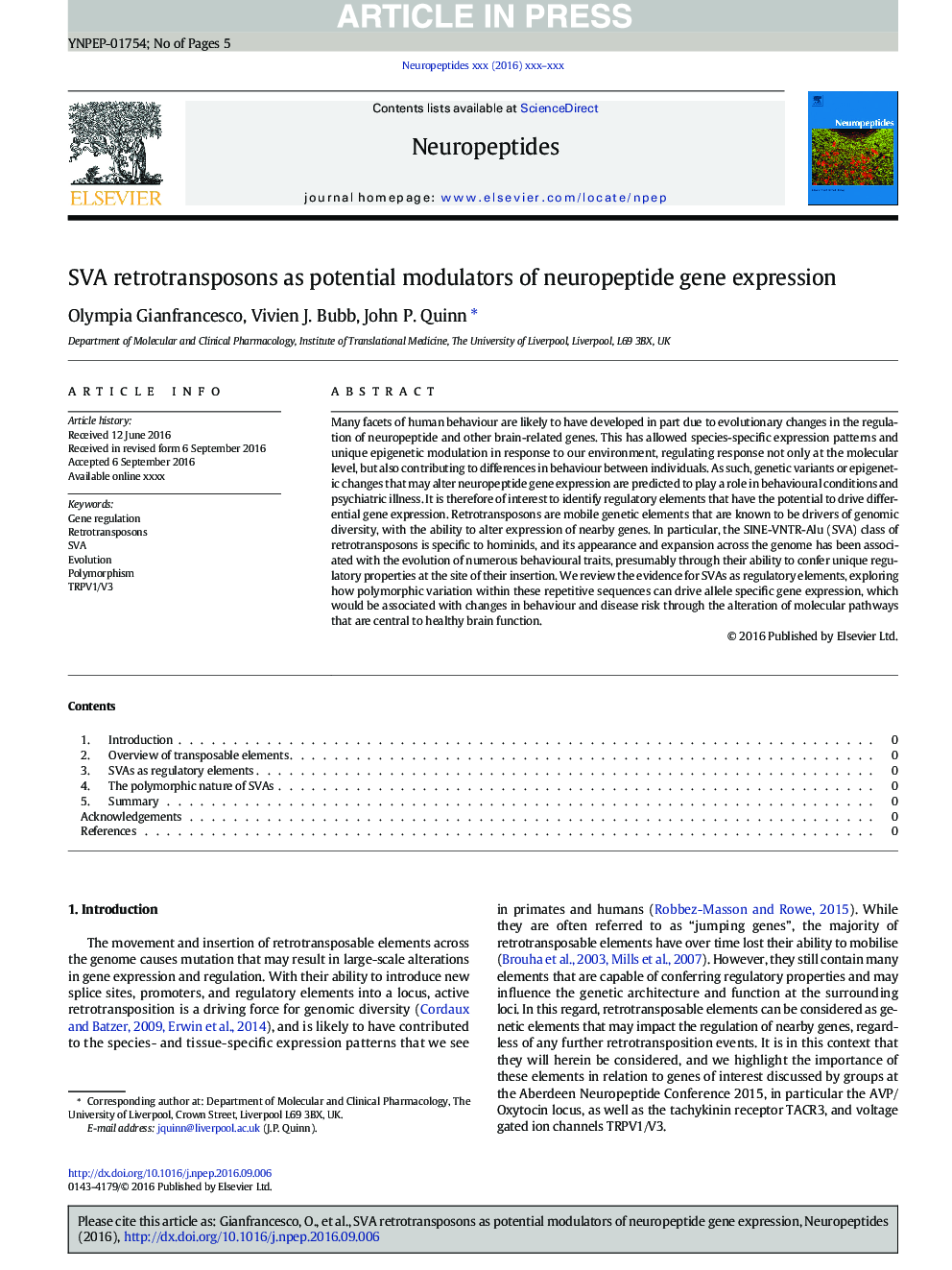| Article ID | Journal | Published Year | Pages | File Type |
|---|---|---|---|---|
| 8633493 | Neuropeptides | 2017 | 5 Pages |
Abstract
Many facets of human behaviour are likely to have developed in part due to evolutionary changes in the regulation of neuropeptide and other brain-related genes. This has allowed species-specific expression patterns and unique epigenetic modulation in response to our environment, regulating response not only at the molecular level, but also contributing to differences in behaviour between individuals. As such, genetic variants or epigenetic changes that may alter neuropeptide gene expression are predicted to play a role in behavioural conditions and psychiatric illness. It is therefore of interest to identify regulatory elements that have the potential to drive differential gene expression. Retrotransposons are mobile genetic elements that are known to be drivers of genomic diversity, with the ability to alter expression of nearby genes. In particular, the SINE-VNTR-Alu (SVA) class of retrotransposons is specific to hominids, and its appearance and expansion across the genome has been associated with the evolution of numerous behavioural traits, presumably through their ability to confer unique regulatory properties at the site of their insertion. We review the evidence for SVAs as regulatory elements, exploring how polymorphic variation within these repetitive sequences can drive allele specific gene expression, which would be associated with changes in behaviour and disease risk through the alteration of molecular pathways that are central to healthy brain function.
Related Topics
Life Sciences
Biochemistry, Genetics and Molecular Biology
Endocrinology
Authors
Olympia Gianfrancesco, Vivien J. Bubb, John P. Quinn,
